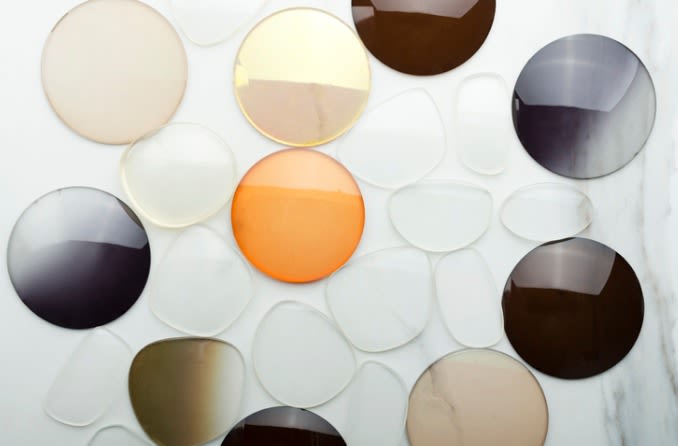Photochromic light-adaptive lenses for glasses and sunglasses

Photochromic lenses are spectacle lenses that are clear indoors and darken automatically when exposed to sunlight. Other terms sometimes used for photochromic lenses include "light-adaptive lenses" and "variable tint lenses."
Following years of extensive advertising, the most popular brand of photochromic lenses sold in Australia and New Zealand are Transitions lenses. This has led some people — including some eye care practitioners — to refer to photochromic lenses as "transitions lenses" or "transition lenses" but there are other brands of photochromic lenses available as well.
The molecules responsible for causing photochromic lenses to darken are activated by the sun's ultraviolet radiation. As UV rays penetrate clouds, photochromic lenses will darken on overcast days as well as sunny days.
Photochromic lenses typically will not darken inside a vehicle because the windscreen material blocks most UV rays. Recent advances in technology allow some photochromic lenses to activate with both UV and visible light, providing some darkening behind the windscreen. Ask your optometrist for details.
Photochromic lenses are available in nearly all lens materials and designs, including high-index lenses, ashperic and progressive lenses. An added benefit of photochromic lenses is that they shield your eyes from 100 percent of the sun's harmful UVA and UVB rays.
A person's lifetime exposure to sunlight and UV radiation has been associated with cataracts later in life, it's a good idea to consider photochromic lenses for children's eye-wear as well as for spectacles for adults. Polycarbonate is the safest lens material for kids, providing up to 10 times the impact resistance of other lens materials. A study at Clinical Vision Research Australia found more than eighty percent (80%) of spec wearing kids preferred photchromic lenses.
NEED AN EYE EXAM OR NEW GLASSES? Find an optometrist near you.
Adding anti-reflection coating to photochromic lenses enhances their performance even further. AR coatings allows more light to pass through photochromic lenses for sharper vision in low-light conditions (such as driving at night), and eliminates bothersome reflections of sunlight and other light from the back surface of the lenses in bright conditions.
Though photochromic lenses cost more than clear spectacle lenses, they offer enormous levels of convenience, particularly if you can't always find your sunglasses before heading outside.
Photochromic lenses and blue light
Besides protecting your eyes from glare outdoors, photochromic lenses offer an additional important benefit — they help filter blue light.
Blue light contributes to digital eye strain and oxidative stress in the retina. It's even possible that long-term exposure to blue light from sunlight may increase certain people's risk of macular degeneration later in life.
See your optometrist to discuss your blue light exposure risk and which type and brand of photochromic lenses is best for your specific needs.
Page published on Tuesday, 17 March 2020






